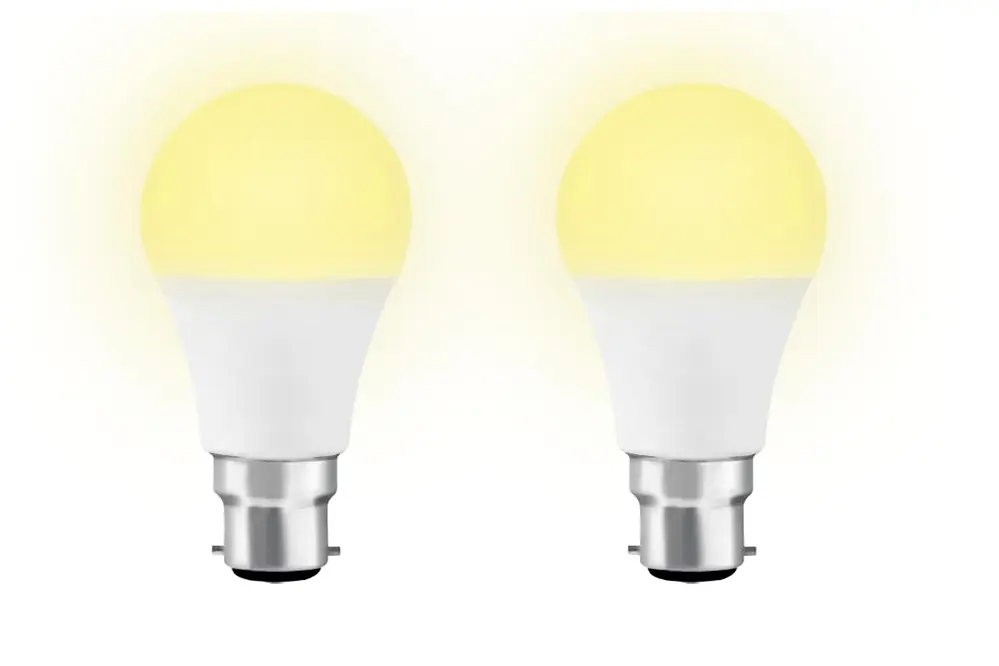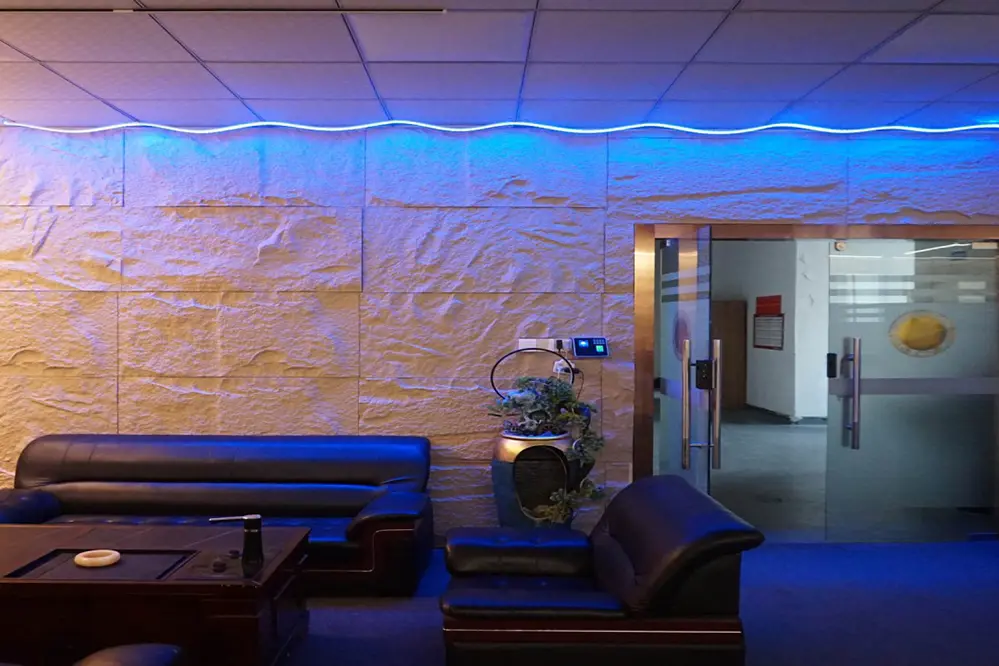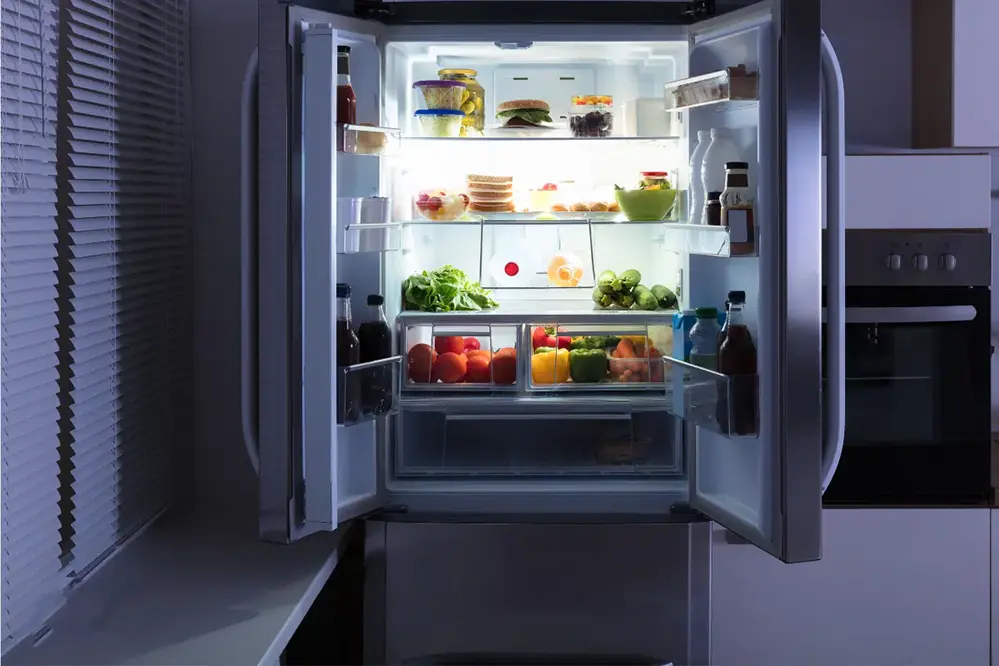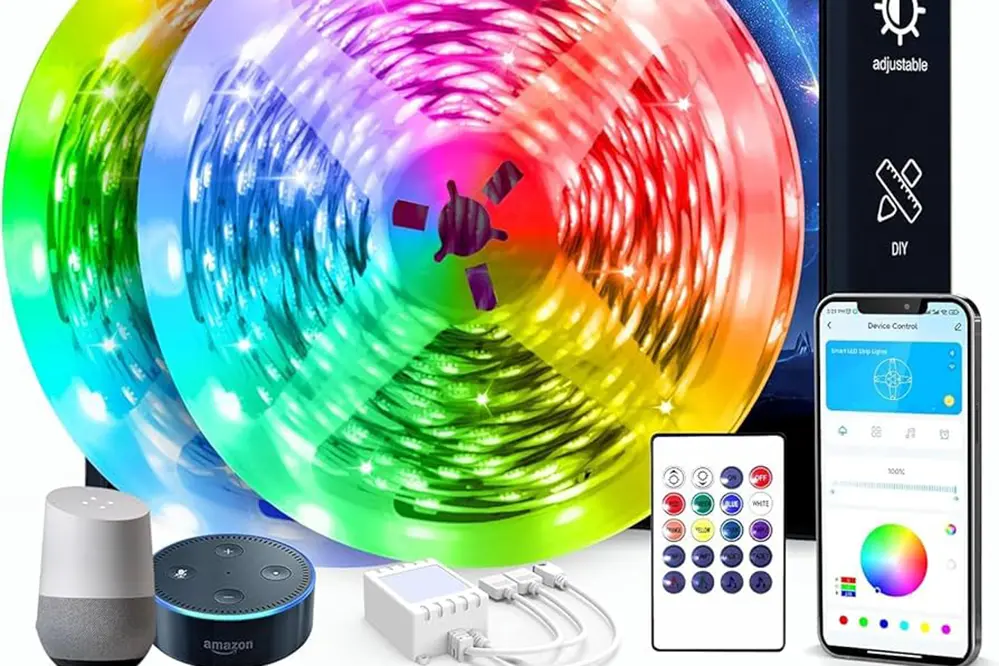Have you ever wondered how to change white LED light to yellow and why it might be worth your while? Lighting is more than just a functional necessity; it’s a powerful tool that can dramatically alter the atmosphere of any space. Yet, many people struggle with the misconception that LED lights are rigid and unchangeable, limiting their potential to create the desired ambiance.
The truth is, converting white LED lights to yellow is not only possible but also beneficial. Yellow lighting is known to evoke feelings of warmth and comfort, making it ideal for creating inviting environments. Whether you’re looking to enhance your home or business, understanding the nuances of lighting can lead to significant improvements in mood and productivity. In this guide, we’ll explore the common challenges people face when attempting to change LED light colors and debunk myths that might be holding you back.
Prepare to transform your space with the power of lighting. By the end of this article, you’ll be equipped with the knowledge and tools to make informed decisions about your lighting needs. Let’s dive in and illuminate the possibilities.
Understanding LED Light Colors
LED colors impact mood, aesthetics, and functionality significantly.
Light Emitting Diodes (LEDs) are versatile lighting solutions. They offer an extensive range of colors by adjusting the specific wavelengths of visible light, thanks to an innovative technology that manipulates how different elements react. Consequently, they can be fine-tuned to cast ambient hues that seamlessly blend with their surroundings.
This versatility makes them popular for various applications.
The science of color perception in LEDs revolves around the manipulation of light’s properties – altering energies emitted by materials within the device – to achieve desired luminous outputs.
From enhancing productivity with invigorating hues to fostering relaxation in tranquil environments, understanding the intricacies of LED colors empowers one to craft spaces that align with their intended purpose. With continuous advancements, the exploration of LED potential and innovative applications is both exciting and promising as of the last year.
Key Reasons to Change LED Light Color
Lighting plays a profound role in influencing mood, productivity, and the overall ambiance of a space, which sparks the motivation to invest.
Warmer hues such as yellow offer comfort and elevate coziness within interiors.
Switching from white to yellow LED lights can reduce eye strain, especially in environments where natural light is minimal, promoting a sense of relaxation, focus, and enhancement of overall mood in the evenings.
Moreover, strategically altering colored lighting allows for fine-tuning the moods in our spaces, crafting environments to suit specific aesthetic desires and functional needs. Embracing this simple yet effective change brings about what can be described as a transformative, harmonious balance between lighting, space, and experience, making any setting feel like home.
Tools Required for Conversion
Embarking on this illuminating journey, gather these indispensable tools to ensure efficiency and success in this transformative endeavor.
First and foremost, an LED-compatible filter or film is a critical tool to alter the light’s wavelength, turning white into a pleasant yellow. This accessory ensures the optimal translucency to achieve the right balance of light diffusion. Additionally, you will need a suitable set of adhesive clips or fasteners that are durable enough to hold the filter securely in place without altering the light fixture’s integrity.
Next, include a multimeter to measure the electrical output of your LEDs, ensuring everything remains within safe operating parameters. It’s important to have wire strippers and a soldering iron on hand, especially if your project involves directly modifying the LED circuit board to adjust tint settings more precisely.
Finally, protective gear such as safety goggles and insulated gloves is necessary to prevent any accidents or injuries during the process. As you embark on this project of transforming your lighting experience, keeping these tools at the ready will empower you to execute adjustments with precision, confidence, and care, contributing to the warm glow and inviting atmosphere of your customized space.
Choosing the Right Yellow LED Bulbs

Selecting the right yellow LED bulbs is a cornerstone of achieving an inspiring ambiance. With a spectrum of yellows available, choose bulbs offering a luminous glow that harmonizes with your space, enhancing comfort and sophistication without compromising on energy efficiency.
In pursuit of excellence, focus on a key metric, known as “color temperature.” This is measured in Kelvin (K), where a range of 2700K to 3000K generally delivers the warm, golden hue associated with yellow light. By understanding the nuances of this spectrum, you ensure that the final touch illuminates your environment, creating a sanctuary of warmth and inspiration.
Warm vs. Cool Yellow Shades
Choosing between warm and cool yellow shades transforms your space—infusing ambiance and influencing mood, impacting the overall experience cultivated within your environment.
A warm yellow light at 2700K creates a cozy atmosphere, while 3000K inspires vibrancy and focus.
With warmer yellow shades, you achieve tranquility and relaxation, perfect for intimate and restful spaces. They envelop you in comfort, gently nurturing your surroundings with a soothing aura that promotes serenity.
Conversely, cooler yellow shades add a crisp and inviting feel—crafting a vibrant yet inviting atmosphere ideal for productivity. These hues invigorate the senses, fostering creativity and lively engagement.
Safety Precautions Before Starting
Embarking on this endeavor requires care.
Prioritizing safety is crucial when working with LED lights. You must ensure that your lights are unplugged from any power source before manipulation, reducing the risk of electrical shock. Additionally, familiarize yourself with the components of your LED lights to understand how they function. Finally, grounding any workspace helps avoid unexpected static surges.
Having proper tools and safety gear enhances protection.
Use heat-resistant gloves and safety goggles for added precautionary measures – these protect against accidental slips or splatters when modifying or working with lights. Adhering to these practices avoids hazards.
By approaching the conversion of LEDs with diligence, including setting up and configuring dimming options, you establish a foundation of confidence and precaution. These measures enable not only a successful adaptation to a warm, yellow glow but also maintain the safety of your process. This ensures that your journey toward illuminating brilliance is executed with safety and success every step of the way.
Step-by-Step Guide to Replace LED Bulbs
Embarking on the replacement of LED bulbs is a straightforward endeavor, a fusion of methodical precision, and pragmatic safety. Begin by ensuring your workspace is adequately lit and free from clutter, creating an environment conducive to focus and careful handling.
To commence the transformation of a white LED to a yellow hue, start by switching off the “power source.” This step is akin to laying a foundation in your illumination project, ensuring no electrical hazards. With the power off, grasp the LED bulb gently yet firmly, and rotate it counterclockwise until it releases from its socket. Replace it with a yellow-tinted or colored lens bulb by aligning it with the socket and turning it clockwise until securely fastened, infusing your space with warmth and comfort.
Removing the White LED Bulbs
Removing white LED bulbs is a task that lays the groundwork for your transformation journey into a warmer ambiance.
In recent years, illumination enthusiasts, crafting luminous atmospheres, often encounter LED bulbs that need replacing. This is an opportunity to explore a new spectrum, adding warmth to your spaces. Ensuring the safe removal of these bulbs is a crucial first step on this enlightening path.
Before you embark on this venture, consider your safety as paramount. Power down your light fixture, acknowledging this simple yet vital action as an integral safeguard against electrical mishaps. With the power securely off, you’re ready to extract the LED bulbs methodically.
Firmly grasp the base of the LED bulb, rotating it counterclockwise with careful determination. Should resistance be encountered, slight gentle adjustments may be necessary to align and remove the bulb without undue force. Remember, a mindful touch alludes to a mindful outcome.
Success in this step will unveil new possibilities, setting the stage for infusing your surroundings with a refreshing glow. Proceed, confident in the knowledge that each bulb removed brings you closer to transforming your environment.
Installing Yellow LED Bulbs
Now that the previous bulbs have been successfully removed, it’s time to invigorate your realm with yellow LED illumination. This ushers in a new chapter of ambiance creation.
Position yourself at the empty fixture, making sure there are no interferences. Verify that the power remains securely off to maintain your safety focus.
Carefully unbox your yellow LED bulbs and led strips, inspecting them meticulously for any damage. Confirm they are the appropriate wattage and size to ensure compatibility.
Gently hold the new bulb by its base, aligning it with the socket carefully. Begin by rotating it clockwise until it securely fits into place, avoiding excessive force.
Feel the anticipation build, knowing you’re installing a luminescent transformation that promises warmth. Each secure bulb adds an inviting hue, enriching your spaces with promising brightness.
Finally, turn on the power and witness the fruits of your careful crafting. Revel in how you’ve enhanced your environment, embracing the vibrant glow of successful change.
Using LED Filters for Color Change

LED filters provide an ingenious, sustainable solution for transforming white light to a warm yellow hue. By selecting filters with the right transparency and color integrity, you can achieve precise color alterations. They are available in a variety of shades, each designed to cater to distinctive aesthetic preferences, thereby empowering you to tailor your lighting environment with creativity. These filters effortlessly slip over existing LED bulbs or fixtures, allowing for an uncomplicated installation that dramatically revitalizes any space with renewed charm. This approach not only diversifies the visual appeal but also maintains energy efficiency and longevity, making it a conscientious choice for enhancing your lighting scheme.
Selecting the Correct Filter
Choosing the perfect filter to transform your white LED lights into a yellow glow can be an exciting journey. The first step involves understanding the specifications of your existing LED setup, as this will guide your filter choice.
In recent years, lighting technology has evolved significantly, offering a rich array of filter options that precisely alter light color for various needs. Carefully identifying the dominant kelvin temperature of your LEDs is crucial, as is considering the desired yellow hue’s intensity and warmth. Doing so ensures your lighting transition is seamless and effective.
When selecting a filter, it’s essential to look for those that not only meet your aesthetic desires but also maintain light quality and efficiency. The material of the filter should be durable and compatible with your fixtures, preventing any potential heat damage or light distortion. Moreover, this guarantees long-lasting use and sustained performance enhancements.
Explore brands that specialize in filter technology, as they often provide comprehensive guides to assist in your selection process. Seeking professional guidance or consulting user reviews can also illuminate your path, leading you to the best filter for your specific lighting scenario. This guarantees an informed decision that enhances your environment beautifully.
The experience of selecting the right filter can be enriching and fulfilling. It’s the key to unlocking a world of warmth and ambiance.
Applying the Filter to LED Lights
Begin by carefully measuring your LED fixture.
Strategically plan where the filter will be placed. This step ensures it covers the entire surface of the light, allowing no white light to escape through unfiltered sections. Precision, marked by the use of appropriate cutting or adhesive tools, can yield exceptional results in curating your desired ambiance.
The process requires a few pivotal tools.
To achieve uniformity of color and minimize gaps, consider using transparent, high-temperature adhesive films to hold the filter in place. These will ensure consistency and bolster the longevity of the filter, preventing wear and tear over time.
By taking a meticulous approach, you create transformative lighting effects enhanced by the vibrant yet soothing yellow hue that these filters provide. With this insightful method, converting white LED lights to a stunning yellow expanse has never been a more rewarding endeavor, paving the way for endless design possibilities in your curated spaces.
Adjusting Color Temperature Settings
A refined approach begins with understanding.
Adjusting the color temperature settings of LED lights can be a remarkably effective way to transition from a stark white light to a warm yellow glow. Most LED fixtures come equipped with the capability to modulate their color temperature, allowing for a seamless transformation from cool whites to soothing yellows. Experimenting, perhaps with the aid of your fixture’s user manual or online tutorials, can lead to an impressive showcase of lighting mastery, harmonizing your living spaces with your envisioned aesthetic.
Identify the potential color range settings.
The transition from white to yellow involves a precise adjustment – often shifting the color temperature from cooler tones around 5000K to warmer hues closer to 2700K – so ensure your fixture supports such adjustments. Utilizing color-changing smart bulbs can also seamlessly simplify this process.
Explore advanced settings for creative excellence, leveraging technological innovation to transform sterile environments into vibrant landscapes, especially in the ever-evolving 21st century where smart home technology sees rapid advancements. Such lighting artistry enhances both functionality and mood, painting a canvas where aspirations for ambiance and innovation harmonize beautifully into the fabric of daily life.
Troubleshooting Color Conversion Issues
Navigating the subtleties of color conversion can sometimes present challenges that appear intimidating, but they also give rise to opportunities for improvement. To ensure a successful transition, first verify that your LED fixtures support color manipulation.
If you encounter difficulties, remember that patiently adjusting settings often unlocks new possibilities. Revisit the user manual for guidance, ensuring each step aligns with the manufacturer’s recommendations and specifications.
Additionally, check if external factors, like ambient light interference, affect the perceived shade of yellow. These variances might require slight adjustments to achieve your perfect hue. Utilize reliable resources and communities, bolstering both expertise and inventive experimentation.
When challenges arise, view them as stepping stones on the path to a refined ambiance. This process of refinement is as much an art as it is a science, requiring a blend of patience, perseverance, and passion. Ultimately, each resolved issue adds to a growing mastery, empowering you to transform any space with confidence, creativity, and a touch of transformative brilliance.
Maintaining Your Yellow LED Lights
Embodying a seamless marriage of innovation and endurance, maintaining your yellow LED lights ensures they shine brightly, bolstering a captivating and inspiring atmosphere throughout your spaces.
Regular inspections should be part of your maintenance routine to ensure optimal performance.
Persistently assessing your lighting setup allows you to preemptively address any potential issues or inefficiencies.
Dirt and dust accumulation may compromise the vibrancy and warmth, necessitating periodic cleaning (adhering to manufacturer’s instructions).
Consider using surge protectors to shield your lighting from power fluctuations, protecting your investment and prolonging its life span.
Ultimately, the art of maintaining these lights aligns with fostering an environment that inspires. Strategic maintenance will pay off in creating consistently inspired spaces.
Benefits of Yellow LED Lighting
Yellow LED lights offer numerous benefits.
These lights are perfect for creating warm spaces. The soft, vibrant hue of yellow adds a welcoming dimension to various environments, helping to set specific moods. Additionally, studies on color psychology suggest this spectrum of light may positively influence productivity and mental well-being.
Their capability to effortlessly promote relaxation.
This makes them an excellent choice for – not only areas where you desire a cozy ambiance but also spaces where creativity thrives – as their soothing influence fosters calm-focused settings.
By incorporating yellow LEDs, you’re embracing forward-thinking illumination solutions that harmoniously merge aesthetics, efficiency, and comfort. These lights are not just about enhancing current environments; they are instrumental in shaping the innovative lighting paradigms of tomorrow. Their brilliant adaptability and style promise enduring positive impacts across diverse applications.
Conclusion
This guide delves into the process of converting white LED lights to yellow, emphasizing the transformative power of lighting in altering the atmosphere of any space. It begins by addressing the common misconception that LED lights are unchangeable, highlighting the potential for creating a warm and inviting environment with yellow lighting.
The benefits of yellow lighting are explored, particularly its ability to evoke feelings of warmth and comfort, making it ideal for both homes and businesses. The guide also discusses how understanding lighting nuances can lead to significant improvements in mood and productivity, offering practical solutions to overcome challenges in changing LED light colors.
By the end of the article, readers will be equipped with the knowledge and tools necessary to make informed lighting decisions. This empowers them to transform their spaces effectively, enhancing both aesthetics and functionality through the strategic use of lighting.





